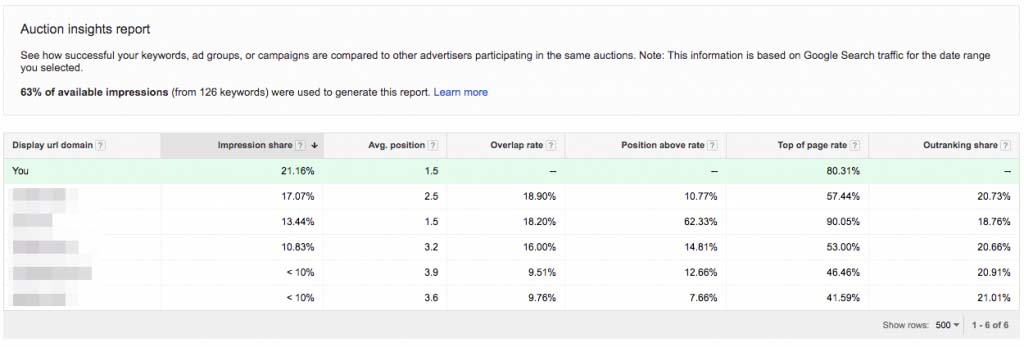Let’s face it. The era of flyers and newspaper ad spaces are increasingly being replaced with more sophisticated methods, leaning more towards Digital Marketing.
Various platforms are now all over the internet, and one of the most popular is Google Adwords. It is one of the most preferred methods because it gives you quick results for the investment you put in. You get results almost immediately, and you can evaluate the performance of your ads in great detail.
The effectiveness of your ad campaign relies on many factors and your decision to pause or unpause a campaign will largely depend on these. One such factor is impression share.

What Is AdWords Impression Share?
Impression Share is the percentage of impressions received by your ads as opposed to the projected number of impressions that your ads could actually get, also known as eligible impressions Let’s break this down. Impression Share is an extremely informative metric in Google Adwords and one of the most overlooked. Impressions are determined based on several factors and when analyzed thoroughly, could lead to valuable insights on why specific ads are not working. It can also help you decide how you can optimize underperforming keywords, where you could increase your bid and budget. Eligible impression is an estimate based on factors like approval statuses, quality scores, bids and many more. So when we define Impression Shares, we use the following formula: Impression share = impressions / total eligible impressions In estimating impression shares, Google takes a look at the ad auctions within a specific date range. Impression shares will then include auctions where your ad was shown or auctions where your ads are competitive enough to show. To give you an example, the attached image below is a sample of an Auction insights report along with brief explanations on what each column represents:
- Display URL domain: The visible URL included in the participant’s ad in the auctions. This column identifies the participant.
- Impression share: Is the number of impressions you received divided by the estimated number of impressions you were eligible to receive. Eligibility is based on your current ads’ targeting settings, approval statuses, bids, and Quality Scores. This number is updated once a day.
- Average position: shows you how your ad typically ranks against other ads.
- Overlap rate: is how often another advertiser’s ad received an impression in the same auction that your ad also received an impression.
- Position above rate: is how often another advertiser’s ad in the same auction shows in a higher position than your own, when both of your ads were shown at the same time.
- Top of page rate: is how often your ad (or the ad of another advertiser, depending on which row you’re viewing) was shown at the top of the page in search results.
- Outranking share: is how often your ad ranked higher in the auction than another advertiser’s ad, or if your ad showed when theirs did not.
- Search impression share – these are the impressions generated strictly through the Search Network
- Display impression share – these are the impressions generated strictly through the Display Network
- Search exact match impression share – these are the impressions generated strictly through the Exact Match Network
- Search lost impression share (budget) – this is the percentage of impressions from the Search network that your ads could have gained but didn’t because of an insufficient budget
- Display lost impression share (budget) – this is the percentage of impressions from the Display network that your ads could have gained but didn’t because of an insufficient budget
- Search lost impression share (rank) – this is the percentage of impressions from the Search network that your ads could have gained but didn’t because of a low ad rank
- Display lost impression share (rank) – this is the percentage of impressions from the Display network that your ads could have gained but didn’t because of a low ad rank
